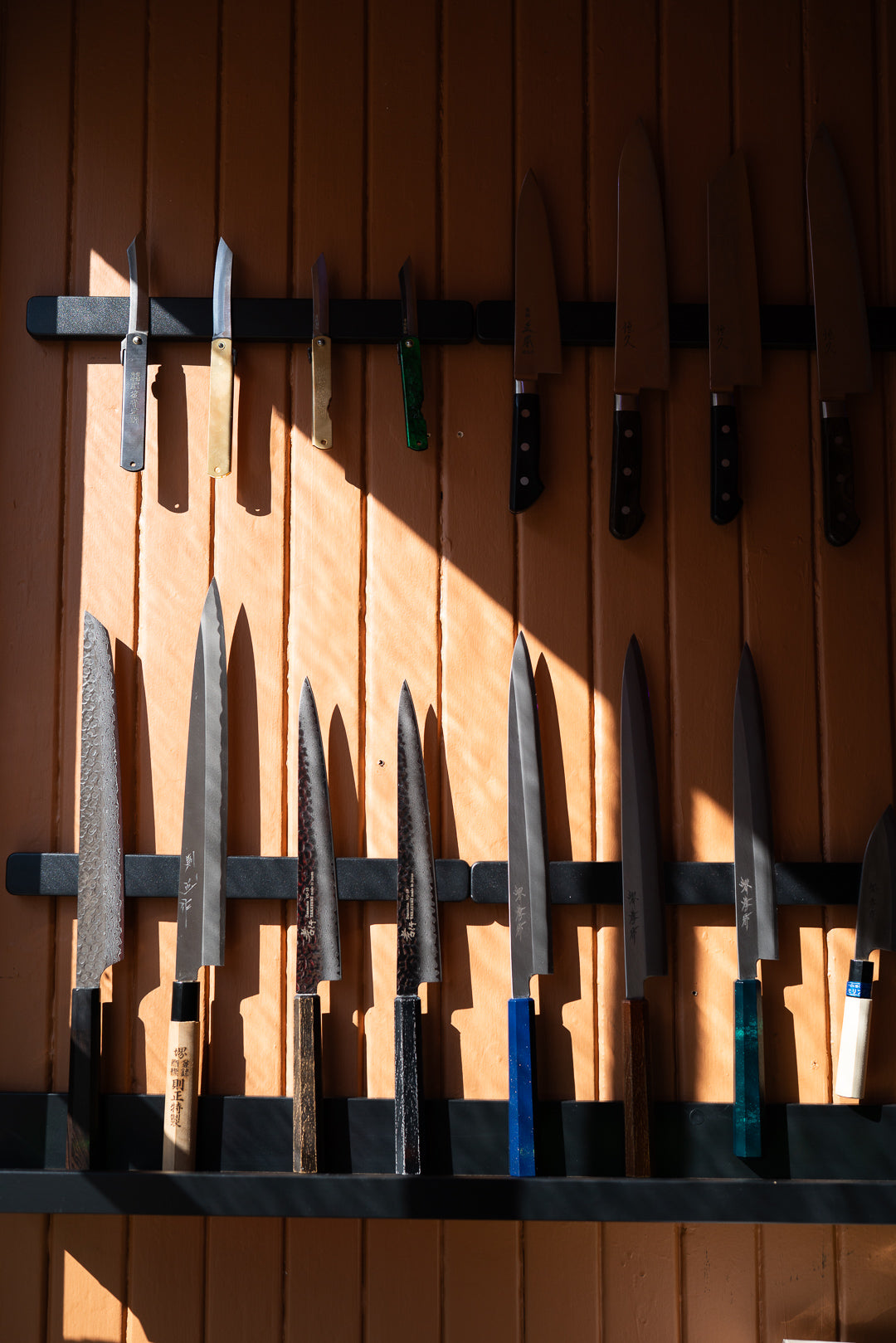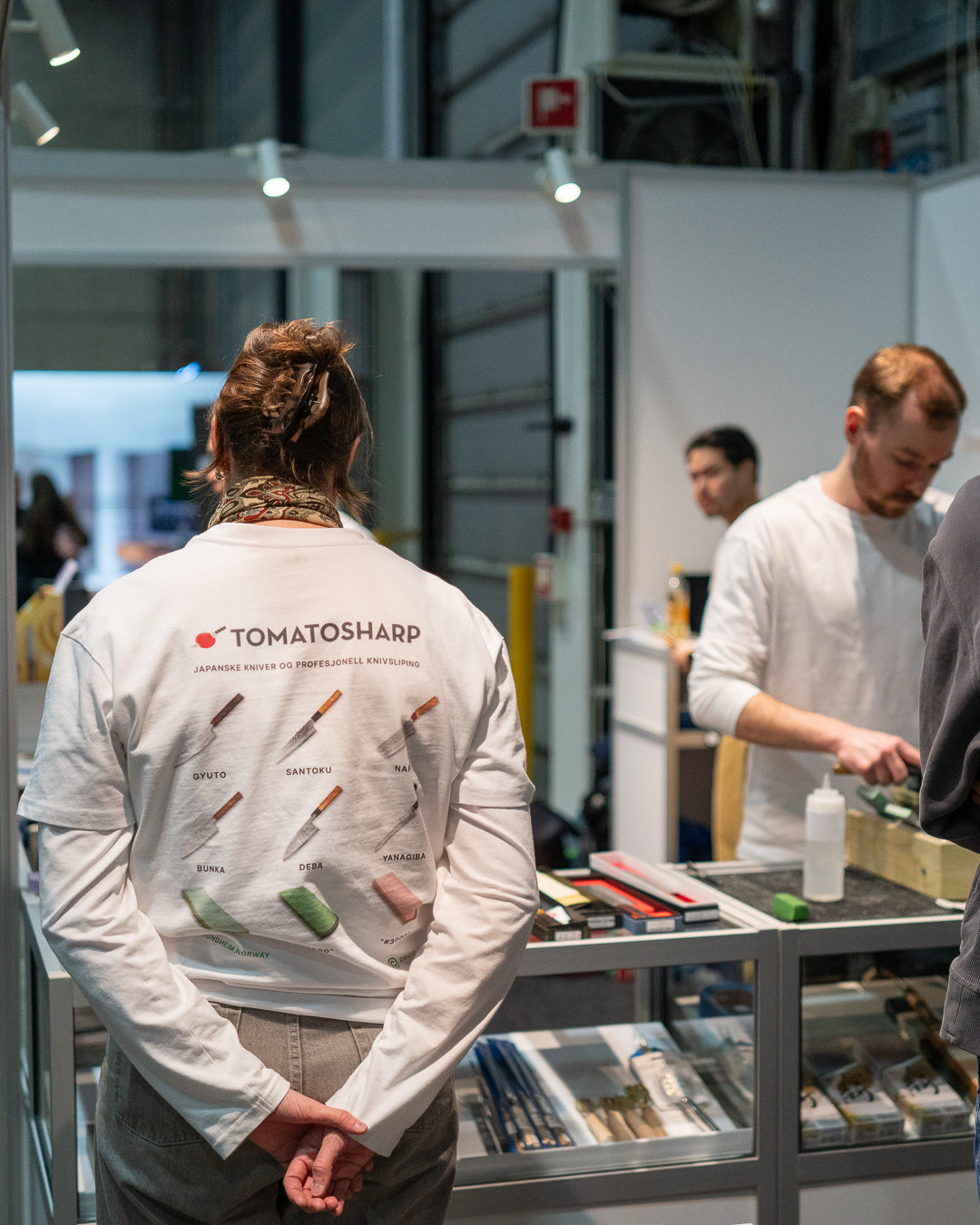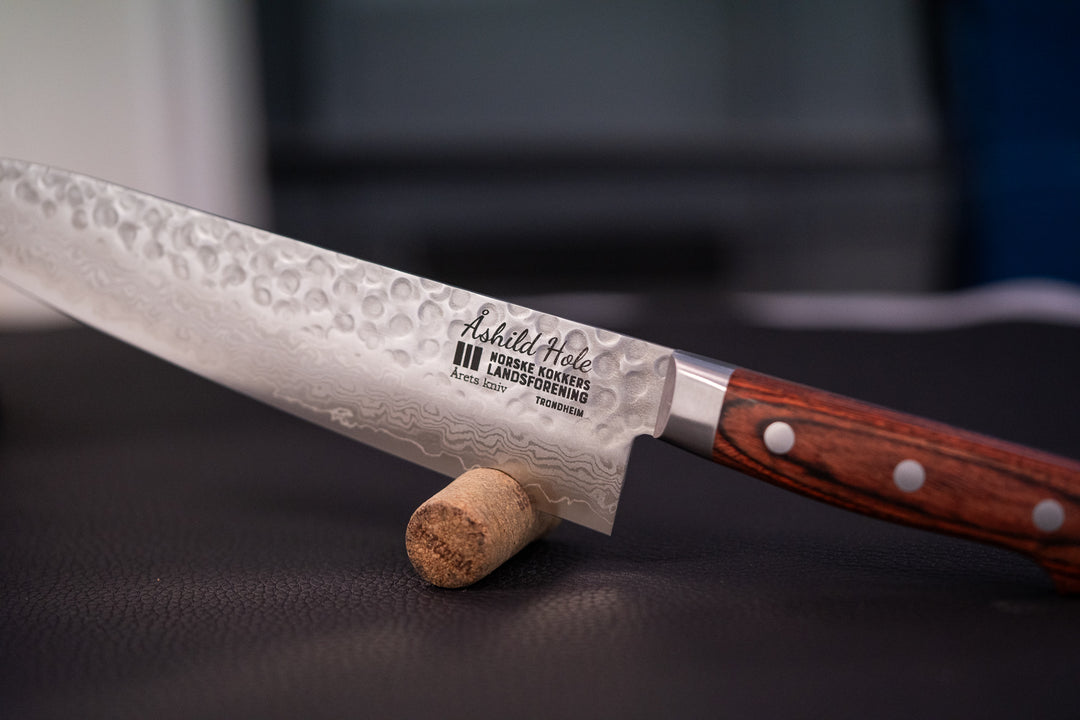Wood, plastic or titanium – which cutting board ruins your knife?
Briefly summarized
-
Wood : Best choice for vegetables. Gentle on the knife, antibacterial and can be sharpened.
-
Rubber : Best synthetic alternative for meat and fish. Used by professional chefs.
-
Plastic : Easy to clean, but wears out quickly and releases microplastics.
-
Materials to avoid : Bamboo, stone, steel, glass and titanium wear down the knife edge.
Cutting Board: Choose the Right Material for Your Needs
The choice of cutting board affects both hygiene, the life of the knife and the environment. Plastic boards are easy to clean, but can release microplastics into the food. Wooden boards are more durable, naturally antibacterial and gentle on the knife. There are also synthetic boards, with rubber boards being a superior choice over plastic for meat and fish.
Microplastics in food
Plastic cutlery breaks down over time, releasing tiny plastic particles that can end up in our food. Every day we are exposed to microplastics from plastic-based kitchenware, which can amount to thousands of particles per year. The microplastic particles can bind to harmful chemicals and pose a potential health risk.
Advantages of wooden pallets

Wooden blades are gentle on the knife and provide a better cutting experience than plastic. Soft woods, such as walnut, and end-grain blades are particularly gentle, as they reduce wear on the knife edge. Unlike plastic, which can collect bacteria in scratches, wood has natural antibacterial properties. To maintain hygiene, wooden blades should be washed with warm soapy water and dried immediately. Another advantage is that wooden blades can be sanded down when they become uneven, which significantly extends their lifespan.
Materials to avoid: Bamboo, stone, steel, glass, and titanium
-
Titanium boards – a bad idea : Titanium is extremely hard and durable, but this also makes it very unsuitable as a cutting board. Knives wear quickly against the hard surface, causing the knife edge to become dull or nicked. In addition, titanium does not provide any natural cushioning, which makes the cutting experience worse and increases the risk of the knife slipping.
Although bamboo is often marketed as a sustainable alternative, it is not ideal for knives. Bamboo is very hard and contains a lot of silicon, which can lead to faster wear on the knife edge. To preserve the life of the knife, softer woods or end-grain boards are recommended.
Stone, steel, glass, and titanium are also materials that should be avoided as cutting boards. These materials are extremely hard and will quickly wear down the edge of a knife. Glass and stone boards are particularly problematic because they provide no cushioning for the knife, which can lead to nicks and damage to the edge after a few uses. Titanium and steel have similar disadvantages, as they do not absorb cutting pressure and can cause the knife to slip or become damaged.
Advantages of plastic boards
-
Easy to clean : Plastic shelves are dishwasher safe, making them easy to disinfect.
-
Suitable for meat and fish : Plastic trays are often recommended for raw meat and fish, as they can be washed at high temperatures to kill bacteria.
-
Lightweight and affordable : They are often lighter than wooden stools and cost less, but wear out faster.
Rubber felt - the best synthetic alternative

If you want a synthetic cutting board for meat and fish, you should choose rubber boards over plastic . The rubber boards that Tomatosharp offers from Asahi are used by professional sushi chefs and competition chefs because they provide a stable and precise surface without damaging the knife edge. They are water-repellent, heat-resistant and easier to clean than plastic, without emitting microplastics. This makes them a superior choice for hygiene and durability.
Longevity and sustainability
A wooden board can last for decades with proper maintenance, while plastic boards often need to be replaced after a short time. Regular oiling prevents drying out and cracking of wooden boards, while rubber boards are more durable than plastic and a more sustainable choice.
What should I choose?
To get the best cutting experience and extend the life of your knife, you should choose a cutting board based on what you most often cut:
-
Wooden chopping boards are the best choice for vegetables. They are gentle on the knife, provide a comfortable cutting feel, and have natural antibacterial properties. Choose softer woods or end-grain chopping boards for optimal performance and durability.
-
Rubber boards are the ideal option for meat, fish and other proteins. They do not absorb liquids, are easy to clean, withstand high temperatures and are used by professional sushi chefs. They provide a stable surface without damaging the knife edge, unlike plastic.
Choose the board that suits your needs – and think about the environment when making your choice!










Veldig informativt side. Takk for nyttig informasjon.
Mvh Tahira
Leave a comment